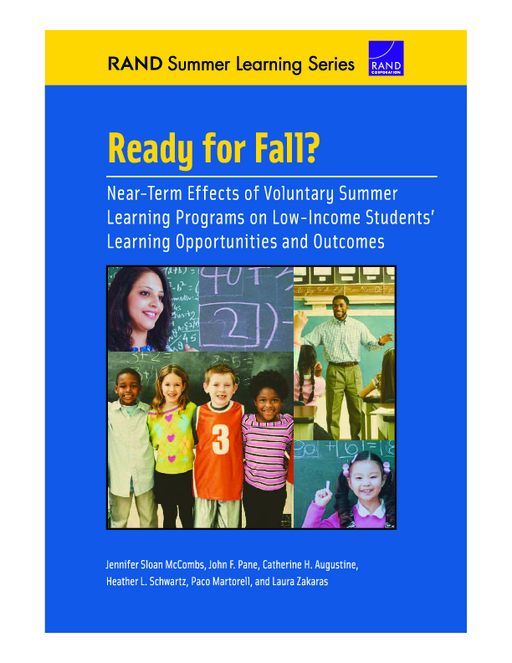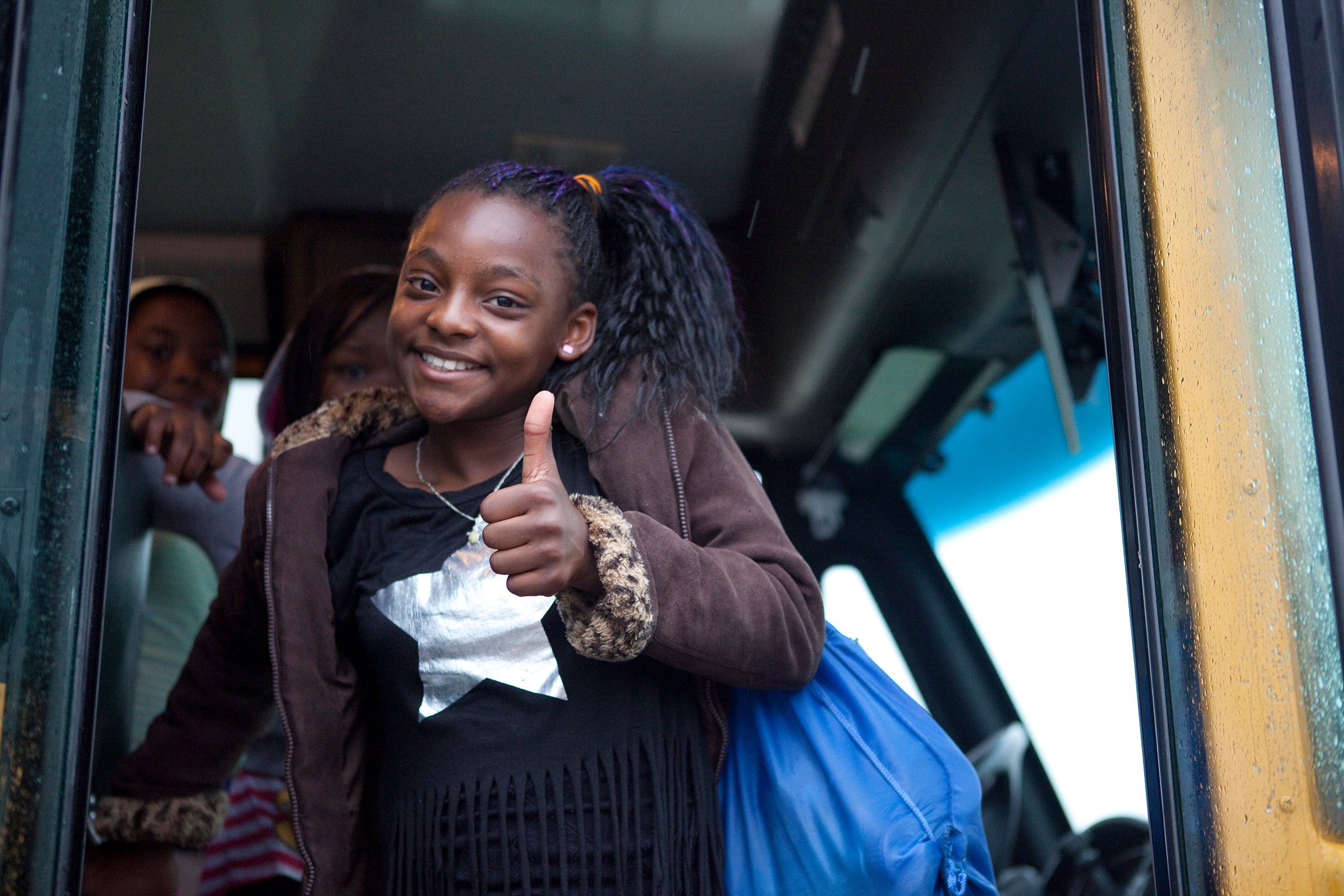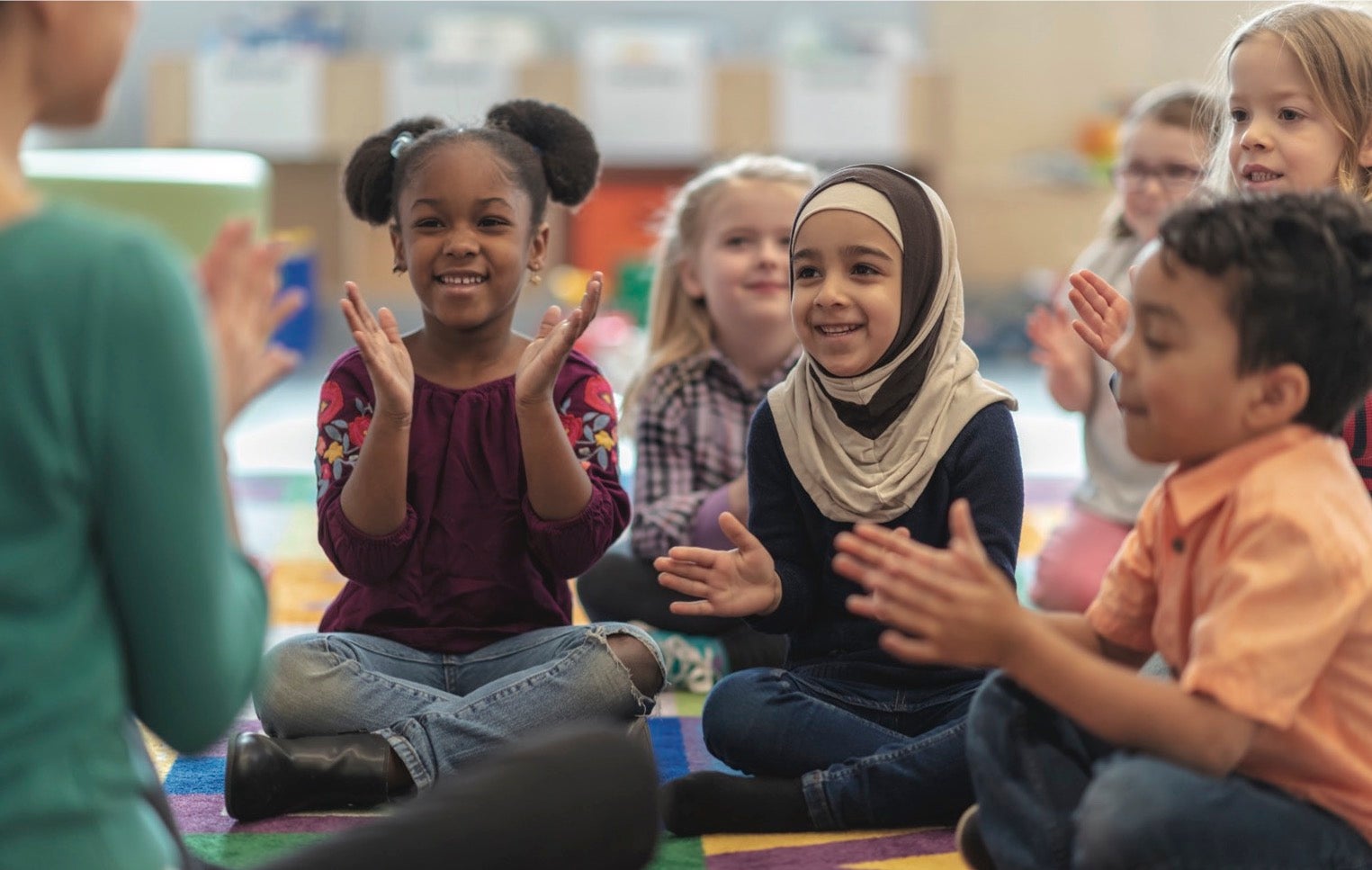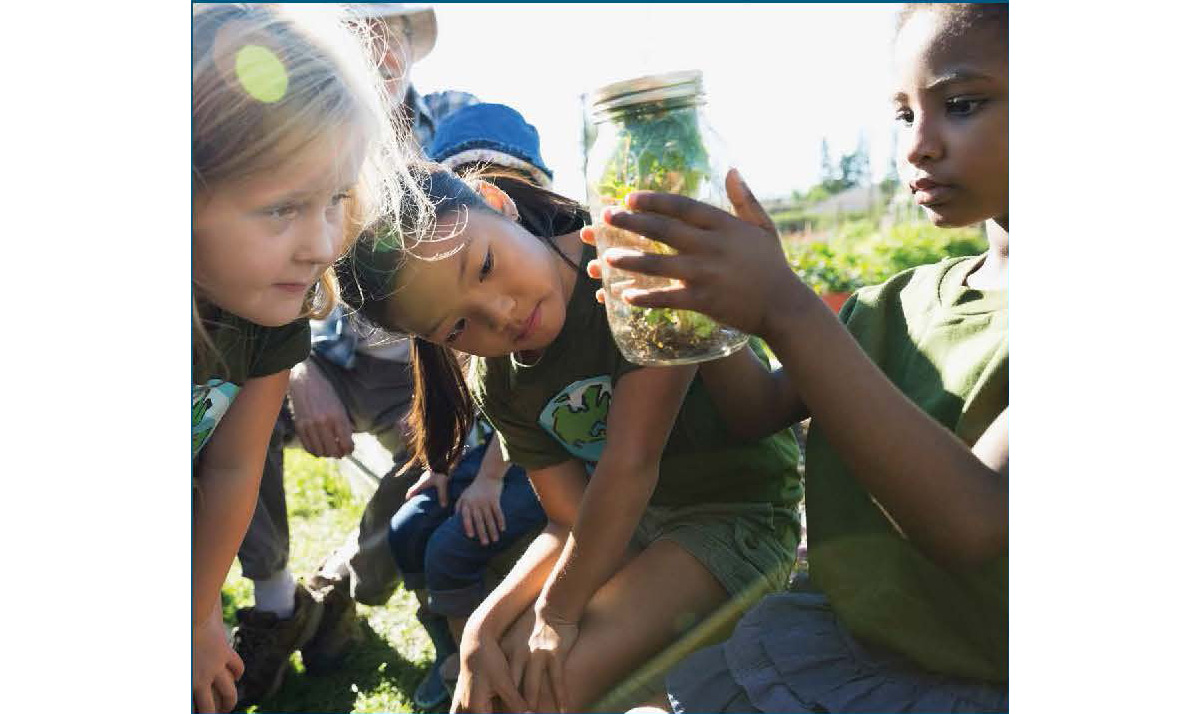- Author(s)
- Jennifer Sloan McCombs, John F. Pane, Catherine H. Augustine, and Laura Zakaras
- Publisher(s)
- RAND Corporation
- DOI Link
- https://doi.org/10.7249/RR815
Research Approach
Researchers studied the impact of voluntary summer learning programs led by public school districts on educational outcomes for children in low-income, urban communities. This report evaluates the near-term impact of one summer of programming as measured by reading and math tests and social-emotional skill assessments administered in the fall of 2013, shortly after the first summer of programming ended.
The five districts participating in the trial were Boston Public Schools, the Dallas Independent School District, Duval County Public Schools (Florida), Pittsburgh Public Schools, and the Rochester City School District (New York). More than 5,600 students were part of the study. Students who had applied to the program were randomly selected to participate or not participate in the program for two summers (2013 and 2014). Some 3,194 students were assigned to the participant (“treatment”) group; 2,445 students were assigned to the non-participant ("control") group.
All the summer program leaders agreed to a set of common research-based elements:
- Voluntary, full-day programming combining academics and enrichment for five days per week for no less than five weeks of the summer
- At least three hours of instruction (language arts and mathematics) per day taught by certified teachers
- Small class sizes: no more than 15 students per class
- No fee to families for participation
- Free transportation and meals.
Districts could make many of their own choices about the design of their programs, such as how to manage their program sites, which enrichment activities to offer, the timing of the program during the summer, and the specific math and language arts curriculum (within some parameters).
Researchers also provided districts with formative evaluations of their program implementation over two summers to drive program improvement before the randomized controlled trial began in summer 2013. This process was intended to ensure that districts were achieving certain quality standards before researchers evaluated the programs’ effects on students.
Implementation and Outcomes Measurement
Researchers collected data on program implementation in each of two summers of the effort. They observed each student’s math and language arts classroom at least once. They also surveyed academic teachers in the summer program and tracked student attendance. To measure outcomes in fall 2013, The Wallace Foundation worked with the districts to make testing arrangements and contracted a firm to test study participants on both reading and mathematics in the first four weeks of school. Researchers also asked homeroom teachers of treatment and control students to fill out a survey reporting on each student’s social-emotional competencies about three months after the beginning of school.








